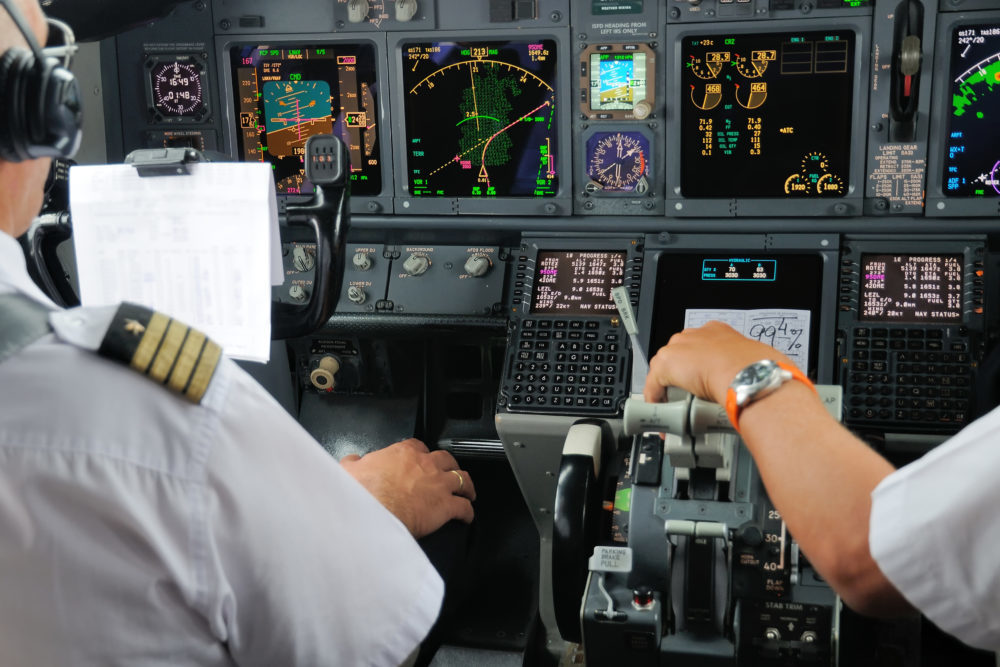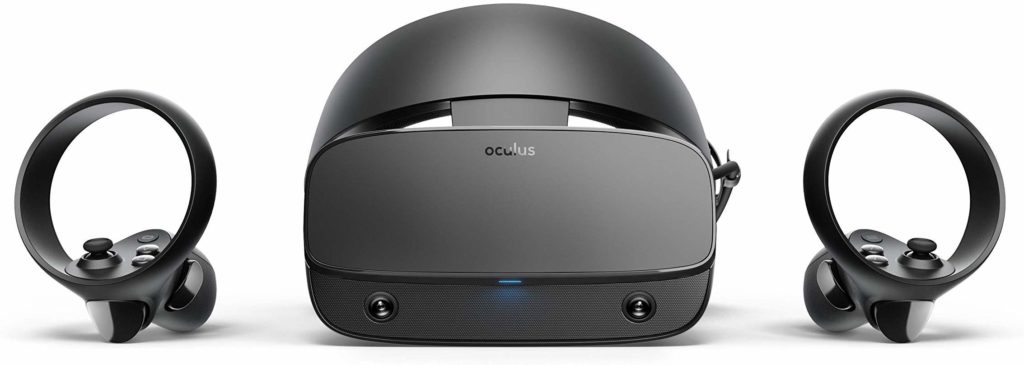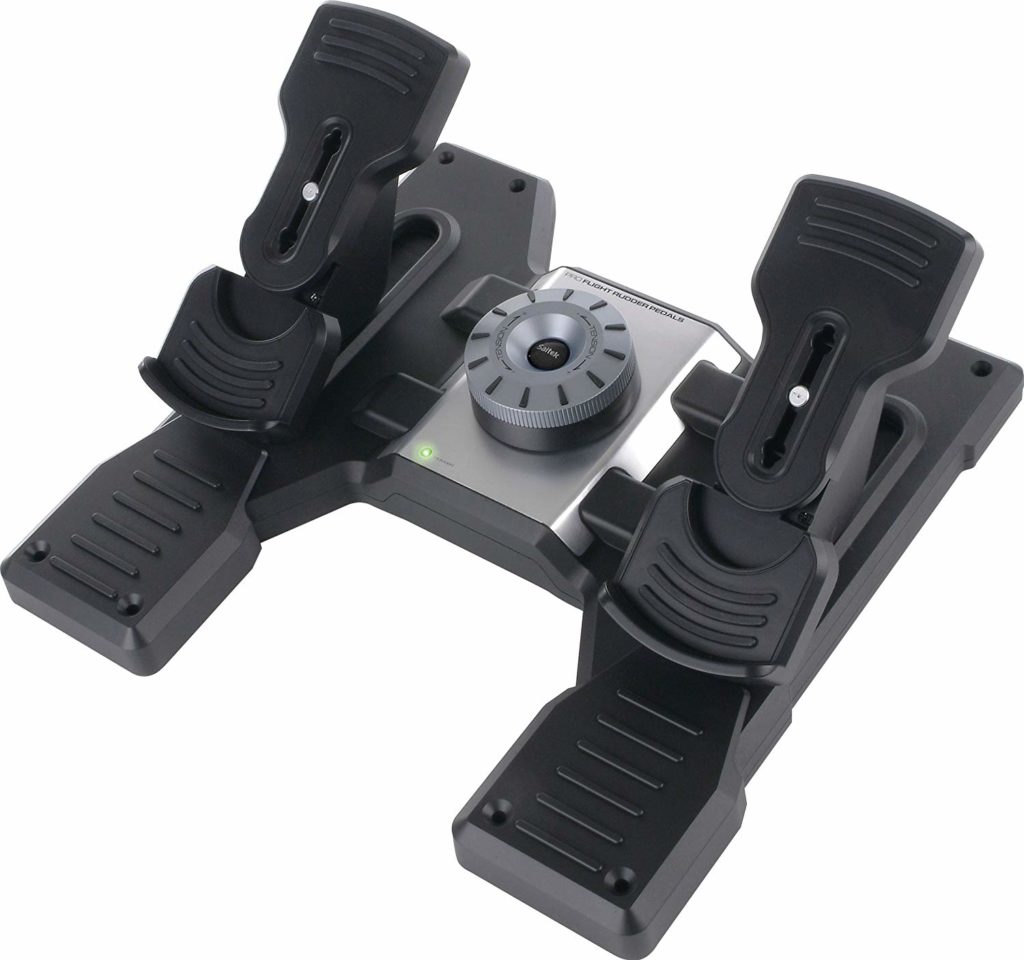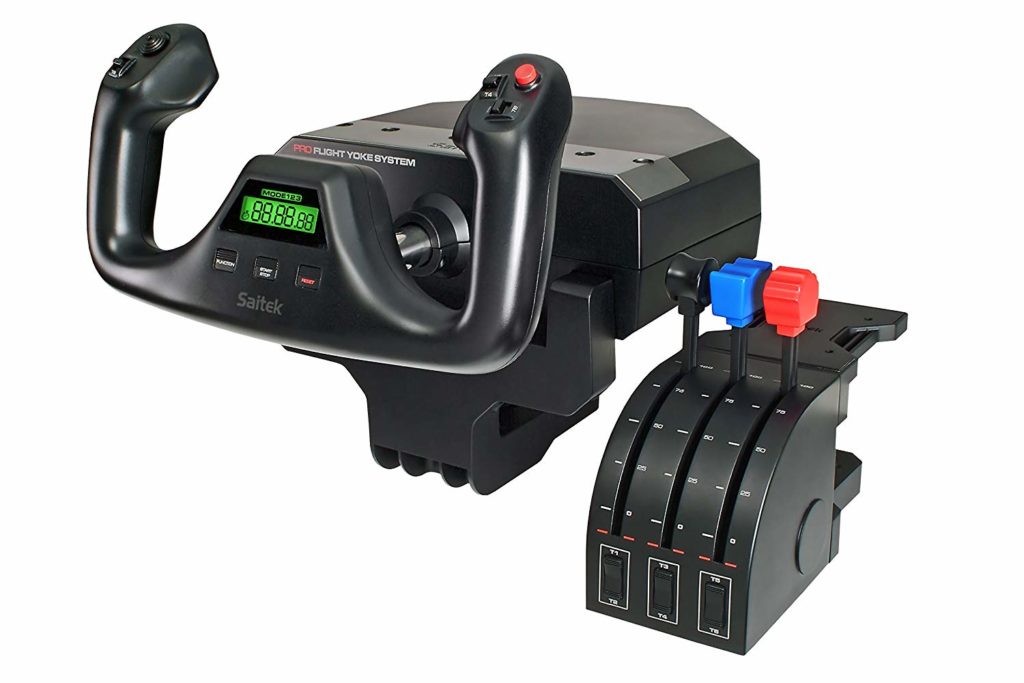
Flying in virtual reality comes with a few challenges to overcome. One of the biggest challenges you will face is “how do I control my plane?”
Well lucky for you, I have tried many different things and have come up with my 3 favorite solutions.
Please note that some of the links in this post are affilliate links. If you do use my links, I really appreciate it as it helps us keep the lights on at VR Flight World.
1. All VR
The first solution involves no physical controls at all. This solution is great if you don’t have the money to get all the flight controls, or if you are flying a more complicated cockpit, where stick and rudder is not as important. Maybe a lot of your flying will be done with autopilot….
When you set this up, make sure it is just you, your headset and lots of empty space around you. You don’t want to be punching the wall as you go to reach for one of the switches… Trust me, it’s not fun. I’ve done it with my desk.
Oculus Rift S
The drawbacks
If you are flying without any controls, there are a few drawbacks. The first is that you will not have any way to control your rudder pedals. Technically X-Plane 11 will do the rudder pedals for you if you don’t have any plugged in, but this will take away from the realism. I am assuming you want to fly in VR for the realism, so this is a big downside for me. You could modify this method and add just rudder pedals. Might be worth the investment.
The second thing is that you won’t have any resistance when pulling on the yoke. Nothing to rest your hand on and nothing tactile to grab. They do their best to make if feel like you are grabbing something (it makes a small vibration) but it is not the same as handling the actual flight controls.
The Upside
You don’t have to spend a ton of money on flight controls and can see everything in your headset. This prevents you from playing pin the tail on the donkey (trying to find your flight controls while blind folded by your Oculus Rift).
2. Yoke and Rudder Pedal
This method involves getting yourself some rudder pedals and a yoke. Here is an amazon link to the yoke and rudder pedals that I use.
In order to make this method work, you need ensure that you mount your yoke out from your desk. This is the tricky part. It should protrude from the desk by at least a foot to make this method most effective.
You want it to stick out because in this method, your right hand will be holding one of the Oculus Touch controllers. You need your right hand to have the room to move around in order to operate the switches, throttle and other items. Recently X-Plane 11 has made this a bit easier by putting a laser pointer out the end of the touch controller. This makes it easier to reach certain switches that might be near the yoke. If you can’t get the yoke to stick out, you can operate switches with the new laser pointer feature.
Logitech Rudder Pedals
The drawbacks
The downside to this method is that you don’t have a physical throttle to put your hand on. It can be disorientating when you are taking off, trying to keep your hand on the throttle and you accidentally let go of the throttle. Now you have to look at the throttle in order to find it. Where as in real life you would be able to instinctively grab the throttle.
The Upside
It is nice to have the yoke in order to control the plane. As well, it is nice to be able to go through a checklist at your run up with your Oculus Touch controller.
3. Yoke, Rudder Pedals, Throttle, and Trim Wheel
This is my favorite method of the three affordable items. If you really want that realism, then I suggest to go all out and buy a yoke, rudder Pedals, throttle quadrant and trim wheel.
This method still uses the Oculus Rift Touch Controllers, however I usually have an easily located chair near me that I can put the controller on. The nice thing is that you can look at the chair and actually see the controller in your headset.
The drawbacks
The draw back in this method has always been that when you use the Oculus Rift Touch Controller, that you don’t have much room to move your hand around without bumping into your physical controls.
Recently X-Plane 11 has alleviated this by adding the laser pointer method. You can now point to what you want to use with the laser pointer. This makes it nice for the hard to reach controls.
One other draw back to this method can be when you lose track of your throttle. If you haven’t got the muscle memory of where your throttle is, then it can be difficult to find again. Just make sure you setup your cockpit in the same way each time. You will start to develop muscle memory on where the controls are located.
The Upside
The benefit to this is that you now have a yoke, throttle, trim wheel and rudder pedals which gives you the basic flight controls. You still get the feel of the controls with the immersion of the VR. For me, it is the best way to fly as you have something physical to grab.
Conclusion
Hope this helped. Make sure you get out there and start flying. If you have any questions, please send me a message with the email form. You can also find me on Facebook, Twitter and Youtube. You can also find my podcast on iTunes or Google Play.
If you want to learn about real world flight training, take a look at Rod Machado’s page, he has tons of great information like this easy to read book, Rod Machado’s How to Fly an Airplane Handbook.
Thanks again for reading,
Dan



Dan…
Great article. What kind of video card setup do you have? I have a single NVIDIA GeForce GTX Titan X, but it wasn’t able to run X-Plane 11 sufficiently (in VR).
Thinking about getting another Titan X, but I wonder if that’s necessary.
What are your thoughts?
Thx.
Sorry for the late reply. More is always better with VR. The new 2080 or 2080ti would work perfectly. I currently run the 1080ti, which does a great job. I used to run a 1060 6GB version, which wasn’t bad, but I think that is pushing it.